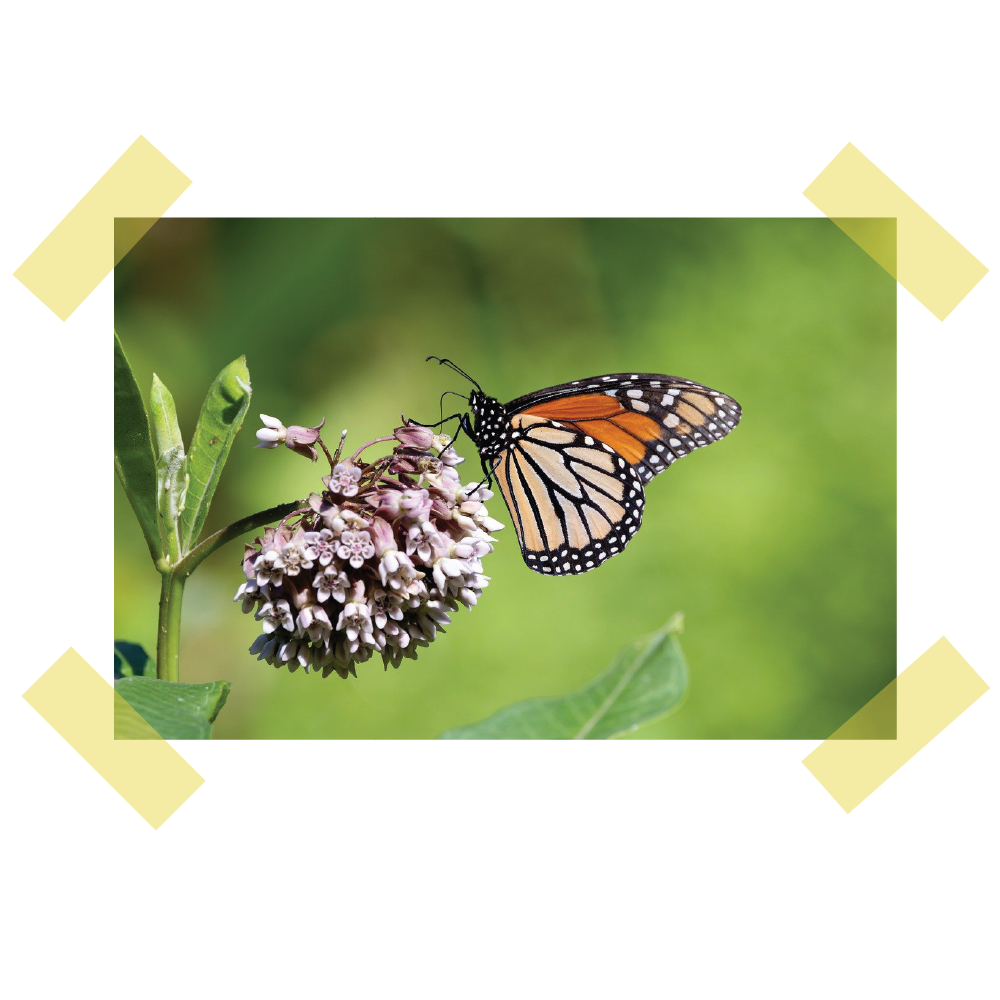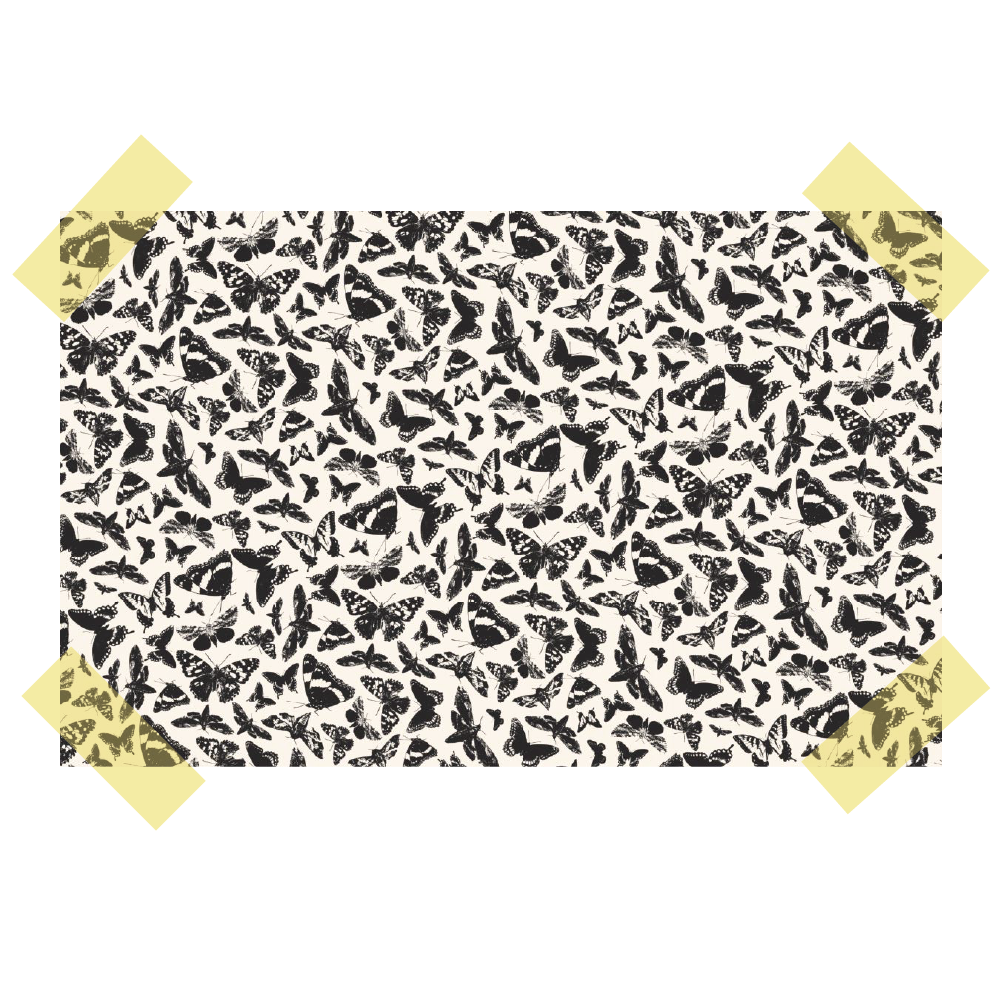Article: Entry No. 4: BUTTERFLIES // The Conservation Behind the Collection

Entry No. 4: BUTTERFLIES // The Conservation Behind the Collection

Species: Butterflies + Moths
Conservation Tips
I’ve spent some time sharing the inspiration, science, and design behind the Butterfly + Moth Collection. Now I want to pause and talk about something just as important:
🌿 How to help these incredible species thrive.
FIRST: WHY SHOULD WE CARE?
Of course, butterflies and moths are beautiful — but what exactly do they do for the environment?
1. They’re pollinators.
When butterflies and moths sip nectar from a flower, they brush against the pollen. As they flutter off to the next bloom, they carry some of that pollen with them — which helps fertilize the plant and make seeds. That’s how we get more flowers and more plants.
Butterflies have long, straw-like tongues, which makes them especially helpful for reaching nectar deep inside certain flowers. Common flowers many butterflies love include milkweed, coneflowers, and zinnias.
Most moths do their work after dark, and they’re drawn to evening bloomers like primrose, moonflower, and jasmine.

Above: Painted Lady butterfly on flower. Photo from Pixabay.
2. They’re food for a lot of other creatures.
Birds feed caterpillars to their chicks (a lot of them — hundreds per day). Frogs, lizards, and small snakes will happily snack on caterpillars, moths, or butterflies when they can. Bats eat moths. Even spiders and mice will eat pupae (chrysalises and cocoons) if they find them.
In short: butterflies and moths are a big deal in the food web.
3. They’re early warning signs.
Butterflies and moths are sensitive to changes in the environment — like temperature, pollution, or habitat loss. When their numbers drop, it can be a red flag that something’s wrong with the ecosystem — like a “check engine” light for nature.
ARE BUTTERFLIES AND MOTHS IN DANGER?
Sadly, yes — many species are struggling.
Populations are declining due to:
-
Habitat loss (fewer wildflowers and native plants)
-
Pesticides and herbicides
-
Climate change
-
Light pollution (which messes with moth behavior)
-
Invasive plants and predators
🦋 Examples of those at risk include:
- Threatened (but not yet endangered):
- Dakota Skipper
- Hermes Copper
- Monarch (proposal to list as threatened)
-
Baltimore Checkerspot within Maryland (featured in our clothing collection):

Above: Baltimore Checkerspot. Featured in our clothing collection.
- Endangered butterflies:
- Mission Blue
- Palos Verdes Blue
- Saint Francis’ Satyr
- Endangered moths:
-
- Bog Buck Moth
- Blackburn’s Sphinx Moth
WHAT CAN YOU DO TO HELP?
You can help right where you are.
1. Plant native flowers and host plants
Butterflies and moths need two things:
-
Nectar plants for adults to sip from
-
Host plants for caterpillars to eat and grow
Native plants are the ones that naturally grow in your region — they’re adapted to your local climate, and they support the local wildlife best. Even a small patch can help.
Many caterpillars are picky eaters — they can only survive on specific plants. Monarchs, for example, lay their eggs on milkweed, because it’s the only thing their baby caterpillars eat.

Above is a Monarch butterfly on a milkweed flower. Photo from Pixabay.
2. Skip the sprays
Pesticides and herbicides don’t just kill pests — they harm caterpillars, butterflies, and other helpful bugs. Try to avoid chemical sprays in your garden or yard if you can.
3. Provide water and shelter
Butterflies need moisture and minerals — you can create a “puddling” spot with damp soil or sand. Leaving a corner of your yard a little wild (think: leaf piles, logs, or tall grasses) gives caterpillars a place to hide and form chrysalises and cocoons.
WHERE CAN YOU LEARN MORE AND SUPPORT CONSERVATION EFFORTS?
Here are a few organizations doing real work to protect butterflies, moths, and other pollinators:
-
🐛 The Xerces Society for Invertebrate Conservation — focused on conserving invertebrates and their habitats
-
🦋 North American Butterfly Association — promotes butterfly conservation, education, and butterfly gardening
-
🌍 Butterfly Conservation — based in the UK, but doing great work for butterflies and moths worldwide.

Above: Garden with a variety of plants. Photo from Pixabay.
Hopefully this gives you a deeper look into why these species matter — and how your actions, big or small, can help them survive.
Wild Regards,
Kate


Leave a comment
This site is protected by hCaptcha and the hCaptcha Privacy Policy and Terms of Service apply.